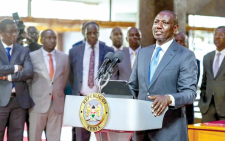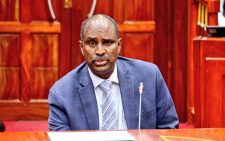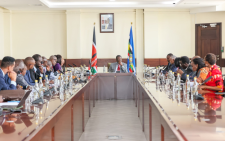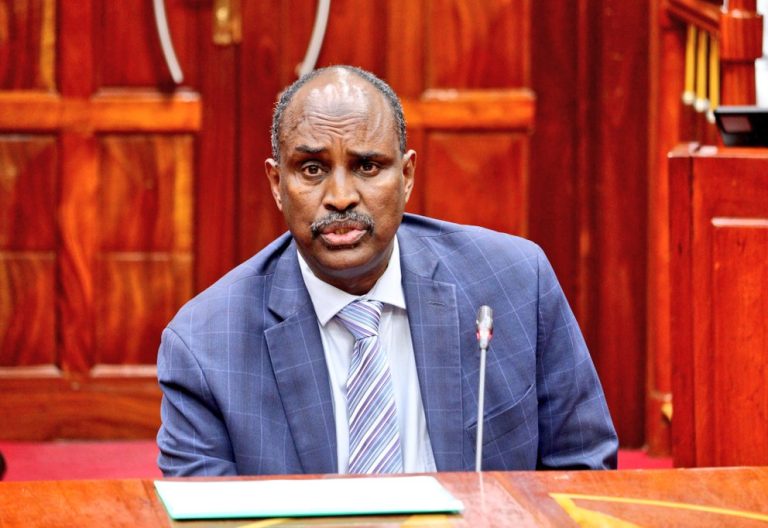State to support teen mums as they resume learning
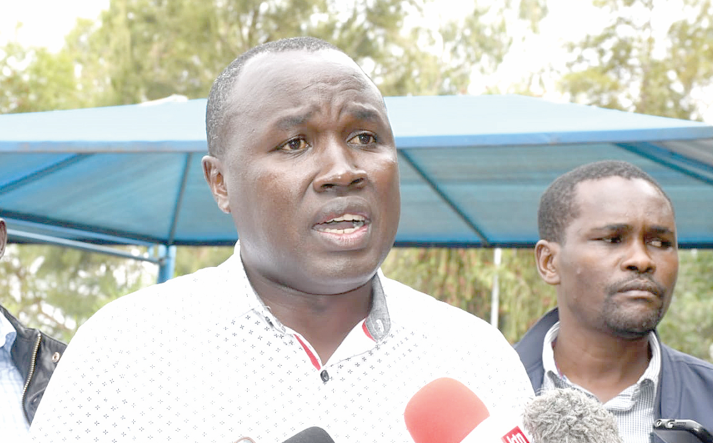
The Government says it will continue supporting programmes seeking re-entry of teen mothers back to school to continue with their studies.
National Syndemic Diseases Control Council (NSDCC) Officer in Charge of County Operations, Dr Douglas Bosire has said they are working with the Ministry of Education and national government administration to ensure that once the young mothers have delivered, they are able to continue with their studies.
Data from NSDCC has shown that Meru had the highest number of adolescent pregnancies among girls aged 10-19 at 26 per cent last year followed by Kitui, Busia and Mandera counties with 21 per cent, 20 per cent and 18 per cent respectively.
“We must commit we will not allow that one out of every three pregnancies that occur in Meru county to be among children aged between 10 – 19. That is why we are bringing in the Njuri Ncheke, women of Meru, miraa traders, religious leaders, government administration as well as the leaders of Meru because we have seen close correlation between early school drop outs especially among the boys and occurrence of adolescent pregnancies,” said Bosire.
Whereas economic activities conducted in the county are good for development, he said it is a concern when children especially boys drop out of school early and get into businesses that are giving them daily cash collections and end up being a bad impact on the girls.
Group discussions
“We are having focus group discussions, engaging all leaders so that we can get to the bottom of the matter. We are happy that Njuru Ncheke cultural leadership association has taken it up and are part of our organising committee,” Bosire stated.
He added: “We have had several meetings and have a caucus with them before the World Aids Day, where they will commit to play their part and give guidance to the community in ending new HIV and Aids infections, adolescent pregnancies and Sexual and Gender Based Violence which are also high in Meru.”
Bosire said the young mother still need to recover because physiologically and physically, they are still not ready to carry babies.
Similarly, there are health effects that would have to be dealt with and after that, bring the young mothers back to normalcy and in a state where they can be able to resume their education.
School re-entry
“We are working closely with the Ministry of Education on school re-entry so that after they have delivered and have care and support at home -which is more often than not also lacking- they can be able to resume their studies,” Bosire explained.
He said this is a multi-sectoral-all society-all Government approach to deal with the situation, which is not only a health but also an education issue that has to be addressed.
“We are involving the village elders, Nyumba Kumi, assistant chiefs… we are involving them in this end the triple threat initiative so that they can go to the communities and mop up those girls who have fallen out of school due to unintended pregnancies and commit to take them back to school,” he said.
He said some of the effects of child pregnancies are that their education is interrupted and in some instances, face discrimination for getting pregnant at an early age.
“One of the effects of child pregnancies is that they have their education interrupted whether they go back to school or not. For instance, you find an A student becoming a C student… it is never normal because of the time lost, stigma, discrimination having fallen pregnant at that early age and this leads to a life long negative impact on the life of the child and as responsible citizen,” he explained.
NSDCC has said there has been a growing concern over adolescent pregnancies and SGBV in relation to new HIV and AIDS infections in the country.
The council’s data also show that adolescents aged 10 – 19 account for 62 new infections that occur every week, 18 per cent of all antenatal care attendances and 36 per cent of all SGBV cases.
Also, NSDCC statistics have shown that there were 22,154 new infections in 2022, out of which 17,680 were adults and another 4,464 were from children aged 0-14 while 41 per cent of adult new HIV infections occur among adolescents and young people aged 15 – 24.
